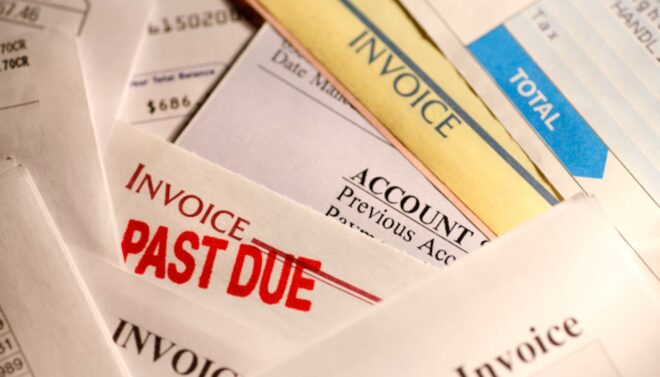How to write a restaurant business plan
Editorial Team
5 min read
Some things in the restaurant world call for spontaneity – for example, a last-minute promo that ties in with a local event or national food holiday. However, for the most part, success in the food and beverage industry can come as the result of lots of planning and careful execution.
Here’s a look at how to write a restaurant business plan that can help check some of the necessary boxes and prepare you for everything from finding investors to creating a menu and more.
Why you need a business plan
Even if you’re planning to open a small restaurant, a business plan should serve as your blueprint, turning the idea in your head into a document that guides you, your team, and your investors. It doesn’t matter if your concept is still in the earliest stages of ideation, you’re in the process of looking for additional financial backing, or you’ve already opened and want to scale. Your business plan should cover all those steps and more. Having that plan in place is integral to success.
Keep in mind that a business plan isn’t just something that’s “nice to have.” It’s documentation that most investors and advisors consider indispensable.
READ: Restaurant business planning: How one general manager set SMART goals
What to include in your restaurant business plan
Your business plan should include several key sections that will speak to a variety of purposes and audiences.
Executive summary
Your restaurant executive summary serves two purposes:
- It’s an introduction to your business plan, setting the scene for your readers.
- It’s a summary of your entire concept boiled down to the most important parts, so you can share your vision in a way that’s quick to read and easy to understand.
Your summary should be interesting and include essential elements such as a mission statement, concept proposal, and cost estimates. Bonus points if you can project potential return on investment.
Company description/overview
Paint a picture of the type of restaurant you want to open. What is your brand? What kind of menu will you offer? What type of service will you provide? How do you want the restaurant to look and feel? Much of this section should outline your key differentiators that will set you apart from the competition.
Team & management summary
Now is the time to describe your organizational structure, including who owns the company, who is filling other key roles (such as general manager or executive chef), and how you expect the restaurant to run. This should be more than just a list of names and titles – include a short bio for each person and a nod to her or his accomplishments.
Market analysis
Market analysis can be a complicated process, largely because you’re analyzing three separate but overlapping things:
- The industry: You need to discern your ideal audience before you can plan almost anything else. Who will eat at your restaurant? Why will these guests want to spend their money at your establishment versus a similar restaurant down the street?
- Your competition: Learn from other restaurants – that includes the successful eateries as well as those that may have made some mistakes. You need to know what hours your competition is open, what their menus look like, how they’ve embraced their interior design, and what they’re charging guests for food and drink.
- The market: Analyze what type of marketing exists in your space and how your plans will be the same and how they’ll be different.
Sample menu
Your business plan doesn’t have to include your final menu, but you should have a sample menu that reflects your concept and average price point. Include dishes representative of your style of service (street-style tacos vs. tableside Caesar salad, for instance). Also, discuss your belief principles and how your business intends to align with them (e.g. Are you sustainable? Are you committed to buying local?).
Use expert tips for creating a restaurant menu to turn your culinary team’s idea into a working presentation that sounds delicious but can be tweaked as you get to know your vendors and your audience. Your menu should be as close to table-ready as possible, though, including dish descriptions and pricing.
Marketing and sales plans
How will you spread the word about your new restaurant? You’ll have to create a marketing plan that includes multiple channels – think social media, digital marketing, email campaigns, etc. – and spots with local news agencies for radio, television, and print.
Business operations
How do you plan to run your business on a day-to-day basis? Your restaurant investment plan must include your days and hours of operation, why your location offers a competitive advantage, how you’ll leverage existing relationships with reliable vendors, and anything else that shows you know how to run a tight (and profitable) ship.
Financial statement
Your financial analysis is essentially the most important part of your business plan. This is a great time to hire a financial professional who specializes in restaurants and can help you come up with accurate estimates based on metrics. These metrics might include your max seating, projected check averages, and daily covers. Also, include your food cost calculations, so investors can see how you came up with menu prices and how much you intend to spend on raw goods.
Appendix
Your appendix is a catchall for documents that you feel are important to include in your business plan but might not fit in the above sections. You can also include supporting documents here, such as crucial graphs and marketing research that supports estimates and statements detailed throughout your business plan.
Time to get started!
Opening a restaurant can be a daunting and complicated process. However, by putting time and energy into a comprehensive and strategic business plan, you’re doing yourself – and future investors – a very big favor.
For more information on how you can start your business off on the right foot with our restaurant POS and management solutions, reach out to a Clover Business Consultant today.
CONTACT SALESRelated Posts
New and notable in the Clover App Market: April 2023
What is an invoice?
Popular Topics
Stay in touch
Sign up and learn more about Clover.
Thank you for your subscription!
More posts about starting a small business
eBook





